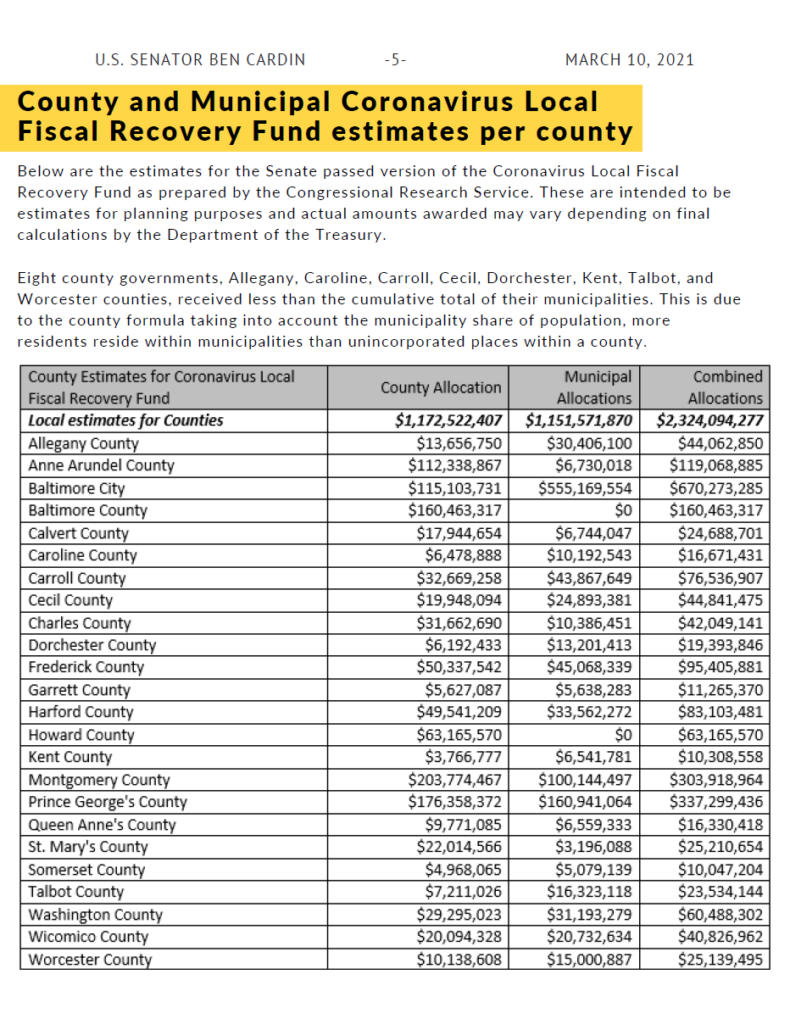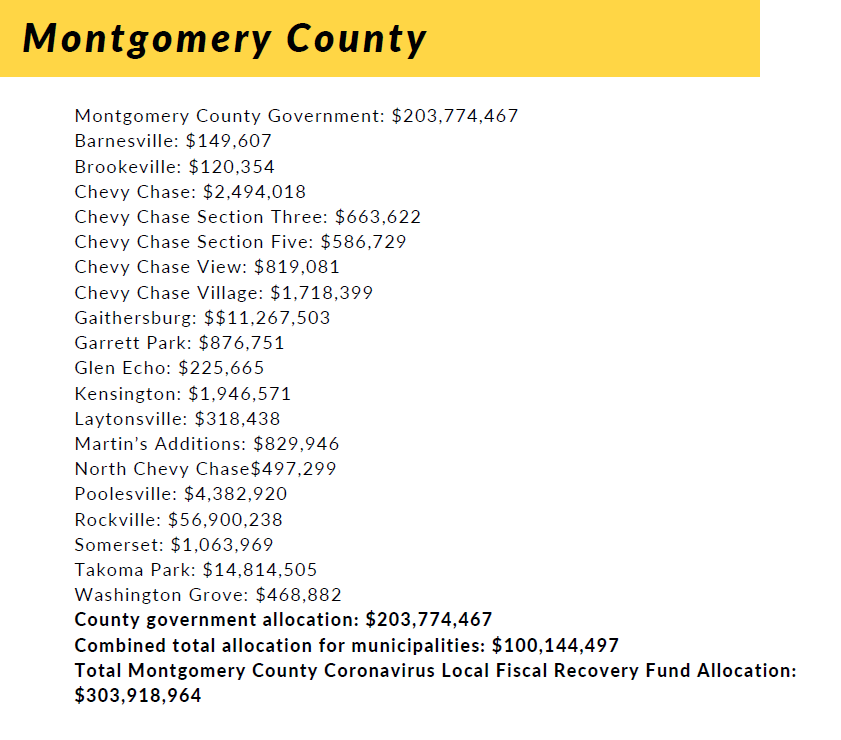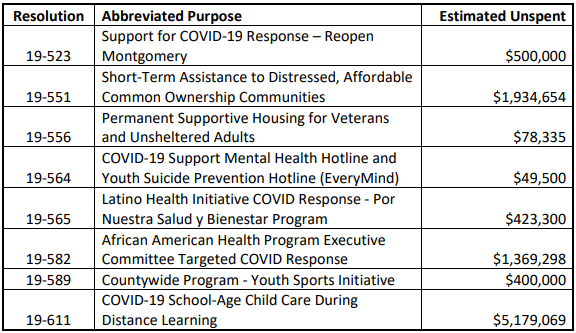By Adam Pagnucco.
I worked at the county council during part of the Great Recession. Those were terrible years. Under County Executive Ike Leggett’s leadership, the county slaughtered every sacred cow to stave off fiscal disaster. It busted collective bargaining agreements, cut employee benefits, instituted furloughs, doubled the energy tax and cut positions by roughly 1,000 people. The county did those things for the sake of fiscal survival.
Never did we dream of cutting county government by 12% in one year. But that is the all-out disaster projected by the executive branch in its new fiscal plan, which was sent to the county council last night.
At first, the new fiscal plan doesn’t seem that bad. It projects lower shortfalls during the current fiscal year than the previous plan from July does. But it confirms what sage budget observers have been predicting for a while: Fiscal Year 21 is tough but Fiscal Year 22 will be much worse. The difference between them is reminiscent of the gap between a paper cut and decapitation.
To understand just how bad the projection for next year is, let’s go over the moving parts of the operating budget. Each fiscal year starts with a beginning reserve, targeted by the county as 10% of adjusted governmental revenues. (The 10% level was initiated by Leggett to stave off a bond rating cut ten years ago.) Next, the county projects its revenues, of which the biggest are property taxes, income taxes, other taxes and state aid (which mostly goes to MCPS and Montgomery College). After adjusting for net transfers, debt service, cash for the capital budget and a few other items, what’s left is allocated to the county’s agencies. Of those, there are four big ones: MCPS, Montgomery College, Park and Planning and Montgomery County Government (MCG), the latter of which is governed directly by the county executive. State-mandated minimums apply to local dollars going to MCPS and the college but not to MCG or Park and Planning. At the end, the fiscal year’s ending reserve is supposed to be set at 10% of adjusted revenues and carries over to the next fiscal year.
It sounds smooth and some years it is, but sometimes things go wrong. The current fiscal plan shows a LOT going wrong, including:
1. A drop in the projected reserve percentage in FY21 from 10.2% to 7.6%, a decline of nearly $140 million. That matters because it means less money will be available for FY22 than previously believed.
2. Declines in estimated FY21 receipts of income taxes ($58 million), transfer and recordation taxes ($19 million) and other taxes ($25 million) that are offset by assumed receipts of federal money, particularly FEMA reimbursements. The federal money is not assumed in FY22 but much of the tax revenue declines remain.
3. An increase in FY21 agency spending of $108 million, some of which is due to the executive’s COVID emergency pay program.
And so lower reserves, less tax revenues and higher spending in FY21 bleeds over to FY22, when the red ink really begins to gush. According to projections, getting reserves back to a 10% level in FY22 will require an extra $127 million. That has to come from somewhere, and since revenues won’t be growing, it will have to come out of allocations to the agencies. But remember – as we said above, MCPS and Montgomery College are subject to state-mandated spending minimums. The fiscal plan projects just 0.5% cuts to both of those agencies. That leaves Park and Planning and Montgomery County Government (MCG) to bear the brunt of the cuts.
Do the math and the fiscal plan projects cuts to Park and Planning and MCG of 12% in FY22. If you include one-time COVID-related spending in FY21, the cut to MCG appears even higher at 17%.
That’s right, folks: a 12% cut to the agencies that pay for police, fire service, parks, libraries, health and human services, transportation, environmental protection, courts, corrections, housing, recreation and most functions of government other than education.
Montgomery County has never seen anything like that before.
The Leggett administration used to send us ominous fiscal plans in December to warn the council against exuberant spending increases only to reveal rosier projections in March. It’s tempting to believe there may be a bit of that here except that the pandemic’s economic effects are truly unprecedented. If this projection is anywhere close to the truth, it would be a planet-shattering cataclysm for all stakeholders in county government – employees, residents and businesses alike. Layoffs would be inevitable. Benefit cuts for employees and vulnerable residents might be unavoidable. Terminated Ride On routes, less street maintenance, cuts to fire service, deferred police recruiting, cuts to child care and social assistance, extractions of cash from capital projects – you name it, it’s all on the table. It makes the Great Recession look like a rain drop on a sunny day.
Assuming the revenue projections hold, there are only three ways to avoid an evisceration of county government. The county can get a federal bailout (as it has been futilely praying for since last summer). The county can raid its reserves and retiree health funds, going significantly below its reserve target of 10% and risking its bond rating. Or it can raise taxes. It could also use some combination of the above in concert with cuts to spread the pain.
Given the ferocity of the pandemic, some degree of budget unrest was certain. The county could have prepared for this better by instituting a real FY21 savings plan rather than the nothing burger it passed in July, sticking to its hiring freeze rather than ending it, not spending freely from its reserves and behaving responsibly on emergency pay rather than creating a new $100 million a year liability. But it’s too late.
The day of reckoning is near.





